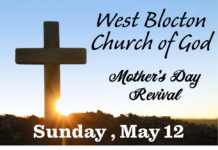“Come, Ye Thankful People, Come” stands as a testament to the enduring power of hymns, capturing the essence of gratitude and spiritual reflection within its verses. Penned by Henry Alford, a figure deeply rooted in Anglican heritage, this hymn has transcended time, embedding itself within the fabric of Christian worship since its inception in the mid-19th century.
Alford’s life journey, marked by early personal loss (losing his mother as she gave birth to him) and diverse educational experiences, profoundly shaped his perspectives and, subsequently, his poetic expressions. Ordained as an Anglican priest, his tenure across various parishes bestowed him with profound insights into pastoral care, faith, and theological interpretations, culminating in the creation of this enduring hymn.
Debuting in Alford’s collection, “Psalms and Hymns” in 1844, the hymn underwent several revisions over the years, evolving to its final rendition in 1868. Its essence resonates with traditional rural imagery, drawing parallels to biblical references, particularly Matthew 13:24–30, emphasizing themes of harvest, divine providence, and the eventual culmination of spiritual reckoning.
The hymn’s verses unfold as a tapestry of gratitude, intertwining the tangible bounties of the harvest with allegorical interpretations of spiritual growth and redemption. The imagery of “wheat and tares,” a metaphor for life’s joys and sorrows, becomes a cornerstone for reflection on the coexistence of both in our mortal existence, awaiting divine resolution in the final harvest.
Alford’s hymn seamlessly weaves together elements of thanksgiving, anticipation of Christ’s return, and the promised deliverance from sorrow and sin. It navigates through the paradoxical nature of life, where joy and suffering coalesce, ultimately leading towards a hopeful resolution in the divine plan.
The hymn’s profound impact owes much to its pairing with the stirring melody of “ST. GEORGE’S WINDSOR,” composed by George J. Elvey. While some critics initially questioned the compatibility of the melody with the hymn’s contemplative themes, its robustness, coupled with nuanced musical phrasing, lends a unique synergy to the lyrical content. The music’s subtle nuances, from the dotted rhythms invoking a spirited invitation to sing to the ascending sequences mimicking the growth of corn in a field, intricately complement the hymn’s profound message.
“Come, Ye Thankful People, Come” stands as a hymn of gratitude, encapsulating the human experience of labor, growth, and eventual spiritual fulfillment. Its enduring presence in Christian worship attests to the timeless relevance of Alford’s contemplative verses, inviting believers to embrace gratitude, reflect on life’s dichotomies, and anticipate the promised spiritual harvest.
The legacy of this hymn endures not merely in its musical notes and lyrical verses but in the hearts and voices of congregations worldwide, perpetuating a message that resonates across generations and continues to inspire gratitude and spiritual reflection.
“Come, ye thankful people, come,
Raise the song of harvest home;
All is safely gathered in,
Ere the winter storms begin;
God our Maker doth provide
For our wants to be supplied;
Come to God’s own temple, come,
Raise the song of harvest home.
All the world is God’s own field,
Fruit unto His praise to yield;
Wheat and tares together sown,
Unto joy or sorrow grown;
First the blade, and then the ear,
Then the full corn shall appear:
Lord of harvest, grant that we
Wholesome grain and pure may be.
For the Lord our God shall come,
And shall take His harvest home;
From His field shall in that day
All offenses purge away;
Give His angels charge at last
In the fire the tares to cast;
But the fruitful ears to store
In His garner evermore.
Even so, Lord, quickly come,
Bring Thy final harvest home;
Gather Thou Thy people in,
Free from sorrow, free from sin,
There, forever purified,
In Thy garner to abide;
Come, with all Thine angels come,
Raise the glorious harvest home.”















